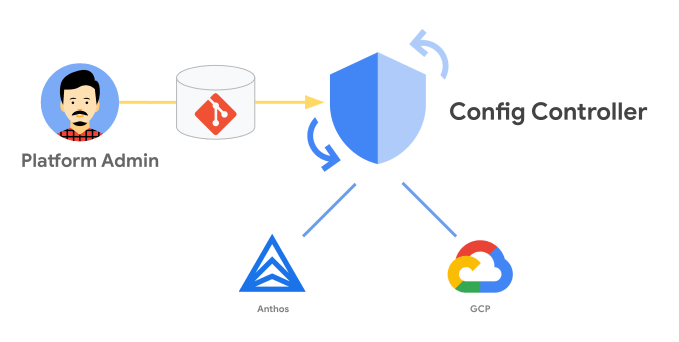Anthos Config Management (ACM) is a vital part of the Anthos platform, enabling platform teams to automatically deploy configurations and enforce security policies across Kubernetes clusters, on-prem, on GKE, and in other cloud platforms. ACM provides a solution to manage your fleets. It keeps track of all the changes made to your fleets and ensures security policies are enforced. ACM also monitors and audits any changes made to your fleets.
Anthos Config Management Overview
ACM is a collection of different components that each solve a specific problem in Anthos. The three main features are:
- Config Sync
- Policy Controller
- Config Controller
You may use anthos configuration management as a supplement to your cluster. Google, on the other hand, provides GCP-based, fully hosted and managed config management for anthos.
Ops team who manage Kubernetes clusters can find this tool very useful. Without Anthos Config Management, it can be difficult for platform ops teams to ensure that all of their Kubernetes clusters are configured consistently and that those security policies are enforced across all clusters. Anthos Config Management solves these problems by providing a central place to manage configurations and implement security policies.
Without ACM, the only way you would probably apply changes (such as daemon set) to all your clusters will be to use kubetcl to apply the YAML file for every cluster. The platform operator team could manage hundreds of such clusters for enterprise businesses. And the only way to get this to work efficiently is to context-switch for hundreds of those clusters, probably by writing a script. That is one approach to do it, and anything such as accidental deletion of configurations can happen. However, Anthos Config Management can provide a more declarative way to manage configurations and apply changes to all your clusters from a central place.
After you've written a configuration file for your daemon set, all you have to do is save it in a git repository. ACM or anthos configuration management will distribute the changes across your clusters. And there's an advantage: you've got one single source of truth for your configuration.
This single source of truth is also helpful for teams who want to monitor and audit configuration changes. You can track who made what changes and when the developer made those changes and even provide a diff between the before and after states. This information can be invaluable when troubleshooting issues or auditing compliance with internal policies or external regulations.
Config Controller
Config Controller is a service that lets you set up and manage resources on Anthos and Google Cloud. It has an API endpoint that can help you provision, activate, and orchestrate resources on Google Cloud as part of Anthos Config Management.
Config Controller comes with Config Sync and Policy Controller to author and enforce policies on your resource configurations.
Config Sync
Config Sync is a core component of Anthos Config Management. It is responsible for keeping configurations in sync across your Anthos clusters. Config Sync has the following features:
- From a single central Git repository, cluster resources are continuously reconciled.
- A repeatable, auditable and version-controlled deployment process.
- Multiple repository sources from the root and namespace levels are supported.
Policy Controller
The Policy Controller is a Kubernetes dynamic admission controller that checks and enforces compliance with policies on your clusters. You can use Policy Controller to enforce, audit, and establish security, regulations, or business rules guardrails for utilising your collections.
Policy Controller ships with a set of policies called constraint library that can be used as-is or customised to your organisation's needs or compliance requirements. So you won't have to worry about writing any constraints; instead, you'll be able to take advantage of the constraints it ships with. This library contains a variety of rules to promote best practices and minimise risk, some of which include:
- Requiring labels on namespaces.
- Restricting repositories where container images can be pulled.
You can also create custom constraints using constraint templates. Constraint templates define policy settings, errors, and custom logic.
If you're looking for a tool to help manage Kubernetes configurations across multiple clusters, Anthos Config Management is worth considering. It can save you time and effort in managing your Kubernetes deployments. Thanks for reading!
